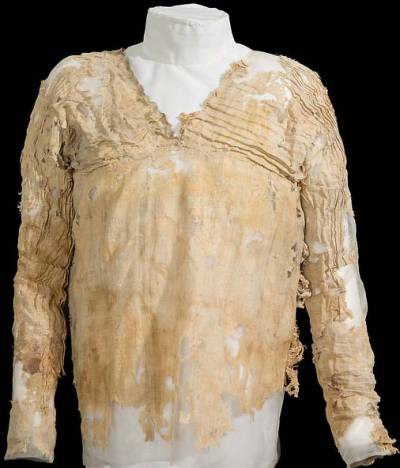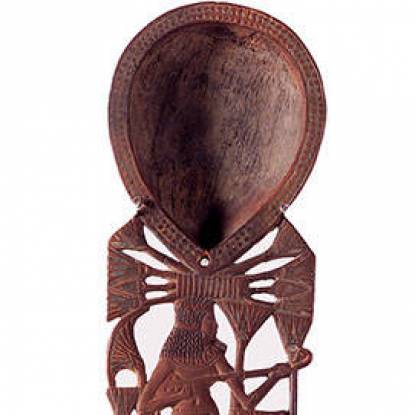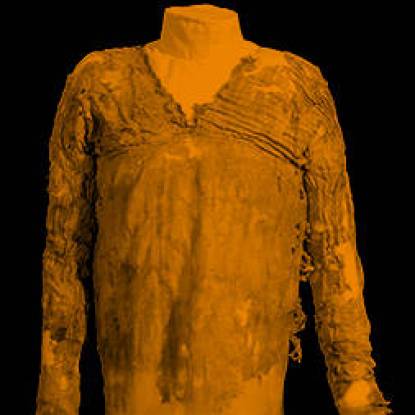Tarkhan dress
Petrie named the site after a nearby village Kafr Tuki to distinguish early finds from later material, since the cemetery continued to be used in antiquity.
He excavated a pile of linen from a Dynasty 1 (c. 2800 BC) tomb in 1913. It was only in 1977, when this linen pile was cleaned by the Victoria and Albert Museum's Textile Conservation Workshop, that the dress was discovered. It was then carefully conserved, stitched onto Crepeline (a fine silk material used in textile conservation) and mounted so it could be seen the way it was worn in life. It is one of the oldest woven garments from Egypt on display in the world.

The dress shows distinct signs of pleating around the neck and on the sleeves. Rosalind Hall, who re-displayed the garment, comments that: "The garment had clearly been worn in life, because it was found inside-out, as it very well might have be after having been pulled over the head with distinct signs of creasing at the elbows and under the armpits."
The dress may have been placed in the tomb deliberately in an 'inside out manner' as a piece of funerary clothing. However, it is hard to make assumptions since the only context was the recovery of a garment amidst a pile of linen.
You can find out more information about the Tarkhan Dress by visiting the Digital Egypt website.
Reference from:
S. Landi and R. M. Hall (1979), 'The Discovery and Conservation of an Ancient Egyptian Linen Tunic', Studies in Conservation, 24, 141-152.
We also have a Textiles in the Petrie School's Pack to download.
 Close
Close




